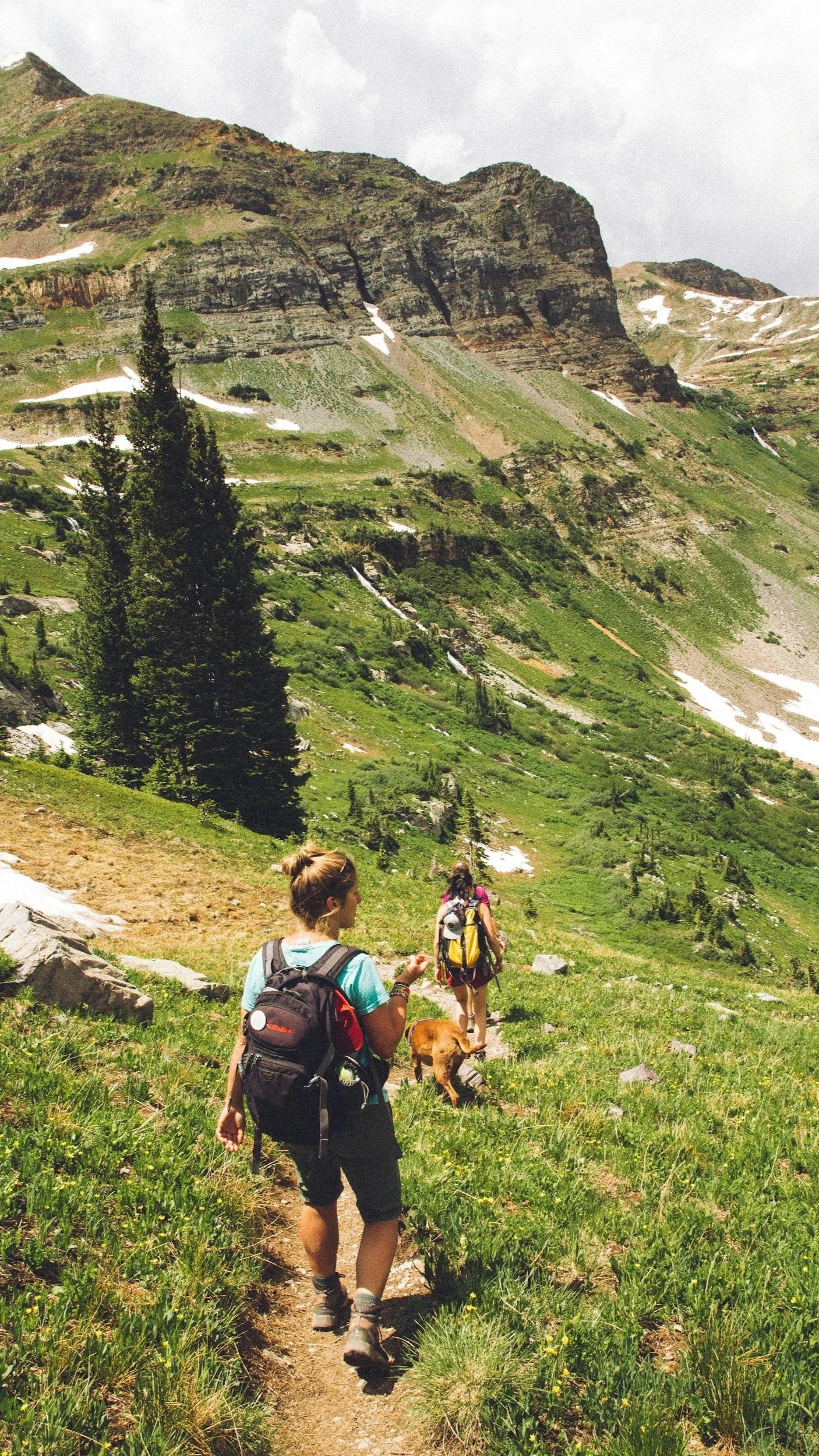How to Train for a Multi-Day Backpacking Trip
Planning a multi-day backpacking trip is an exhilarating adventure, but it requires more than just packing the right gear—it also demands proper physical preparation. Whether you’re traversing rugged mountain trails or winding through dense forests, building your endurance, strength, and confidence is crucial. Here’s a guide to help you train effectively, so you can enjoy the journey without unnecessary strain or injury.
How Soon Should You Start Training?
The ideal timeframe to start training depends on your current fitness level, the difficulty of the trip, and how much weight you’ll be carrying. For most people, 8 to 12 weeks of dedicated training is sufficient to prepare for a multi-day backpacking trip.
If your route involves significant elevation gains or long hiking days, err on the side of caution and give yourself at least three months to build up strength and endurance. For those who live in flat areas like Florida, this timeline is particularly important since you’ll need extra time to simulate conditions like inclines and rugged terrain.
1. Build Your Cardio Endurance
Multi-day backpacking involves long hours of walking with a loaded pack, so cardio is key.
• Start with Regular Walks: Begin with 2-3 miles at a steady pace, and gradually increase your distance.
• Progress to Hiking: Incorporate actual hikes on trails with similar terrain to your planned trip.
• Use a Fitness App: Apps like AllTrails+ or Strava can track your progress and help you find trails to match your fitness level.
💡 Florida Tip: Since elevation gain is limited in Florida, look for overpasses, staircases, or sand dunes to mimic uphill sections of a trail.
2. Strengthen Your Legs and Core
Carrying a loaded pack requires strong legs and a stable core. Incorporate these exercises:
• Lunges and Squats: Build lower body strength for uphill climbs.
• Step-Ups: Mimic steep trail sections using a bench or sturdy surface.
• Planks and Russian Twists: Strengthen your core for balance and stability.
💡 Pro Tip: Wear your loaded backpack while doing some of these exercises to simulate trail conditions.
3. Rucking: Hiking with Weight
Rucking—hiking or walking with a weighted backpack—is one of the best ways to prepare for a multi-day backpacking trip.
• Start Light: Load your pack with 10-15 pounds and walk a few miles, gradually increasing the weight and distance as you progress.
• Simulate Trail Days: Over time, aim to carry the same weight as your planned trip (typically 20-30 pounds).
• Train on Mixed Terrain: Practice walking on uneven surfaces, sand, or inclines to prepare for trail conditions.
• Use Trekking Poles: A good pair of trekking poles like these can help with stability and reduce the impact on your knees.
💡 Florida Tip: Fill your pack with water bottles or sandbags to adjust the weight easily during your rucking sessions.
4. Improve Your Balance and Flexibility
Backpacking trails are rarely flat, and balance is critical for navigating uneven terrain.
• Balance Exercises: Practice single-leg stands, yoga poses like Warrior III, or use a balance board.
• Stretch Regularly: Incorporate dynamic stretches before hikes and static stretches afterward to prevent injuries.
5. Boost Your Stamina
Backpacking is a test of endurance, so training your body to sustain effort over long periods is essential.
• Interval Training: Alternate between high-intensity bursts (e.g., jogging uphill) and lower-intensity recovery (e.g., walking).
• Longer Weekend Hikes: As your trip approaches, aim for back-to-back hikes to simulate the fatigue of multiple hiking days.
💡 Florida Tip: Take advantage of local nature trails and increase your pace to compensate for the lack of elevation. Add sand or uneven surfaces for an extra challenge.
6. Pay Attention to Nutrition and Recovery
Fueling your body properly is just as important as the training itself.
• Hydration: Start hydrating well before your hikes.
• Trail Snacks: During training hikes, experiment with snacks like energy bars or trail mix to find what works best for your energy needs.
• Recovery: Give your body time to recover with adequate rest, stretching, and hydration after each hike.
7. Simulate Trail Conditions
If your trip involves steep climbs, rocky terrain, or stream crossings, train for these specific challenges.
• Train on Similar Terrain: If possible, hike on trails that mimic the elevation and conditions of your trip.
• Stair Training: Stairs are a great substitute if you don’t have access to trails.
• Cross-Training: Activities like cycling or swimming can complement your routine and improve overall fitness.
💡 Florida Tip: Sand beaches are an excellent option for strengthening muscles needed for uneven surfaces.
8. Test Your Gear
Don’t let your first trip with new gear be the actual adventure.
• Wear your hiking boots and socks during training hikes to break them in.
• Practice setting up your tent, using your stove, and filtering water to build confidence in your equipment.
• Adjust your trekking poles to the right height and practice using them effectively on both inclines and declines.
9. Stick to a Training Plan
Give yourself at least 8-12 weeks to prepare, depending on your current fitness level and the difficulty of your trip.
• Start with shorter hikes and lighter packs, then progress weekly by increasing the mileage, elevation gain, and pack weight.
• Track your progress using fitness apps like MyFitnessPal or Apple’s own Fitness+ app to stay motivated and accountable.
Training Together for Motivation
If you’re going on this backpacking trip with a group, and some of them live nearby, consider training together. Training as a group not only helps to motivate each other but also strengthens camaraderie before the big adventure.
Running is an excellent way to build cardio endurance and improve your overall fitness. Whether it’s short jogs or long-distance runs, this activity can boost your stamina for those long days on the trail. Combine your runs with hiking and other exercises to round out your preparation.
💡 Pro Tip: Schedule weekly meetups for group runs, hikes, or even rucking sessions with your loaded backpacks. The shared effort can make training more fun and keep everyone accountable.
10. Listen to Your Body
While consistency is important, so is listening to your body. Rest when needed, and don’t push through pain—it’s better to modify your training plan than risk injury.
My Favorite Picks for Your Training Journey
• Trekking Poles: Lightweight Adjustable Poles
• Fitness App: Strava Premium for tracking hikes and performance.
• Hydration Pack: CamelBak Backpack for easy hydration on the go and training.
• Trail Snacks: Cliff Energy Bars for sustained energy during training hikes.
Final Thoughts
Training for a multi-day backpacking trip might seem daunting at first, but the preparation is an essential part of the adventure. By building your fitness, testing your gear, and simulating trail conditions, you’ll not only reduce the risk of injury but also increase your enjoyment and confidence on the trail.
Every step you take during training brings you closer to achieving your goal of an unforgettable backpacking experience. Start today, and you’ll be ready to tackle those trails in no time!
What’s your next big adventure? Share in the comments!


